by Tessa Occhino
As you walk down the steps under the clocks of Flinders Street Station the first thing you will see is St Paul’s Cathedral. It makes up part of the Melbourne landscape, with its beautiful neo gothic style and iconic towers and spires. However, these aspects of the cathedral were, for a period in the 1920s, up for debate, as were many buildings in Melbourne and across Australia.
The cathedral’s initial design by William Butterfield, an English revival architect who refused to visit the colony of Victoria, was much like the cathedral is today. However, when the project was later taken over by Joseph Reed the design was changed to feature a relatively flat top.
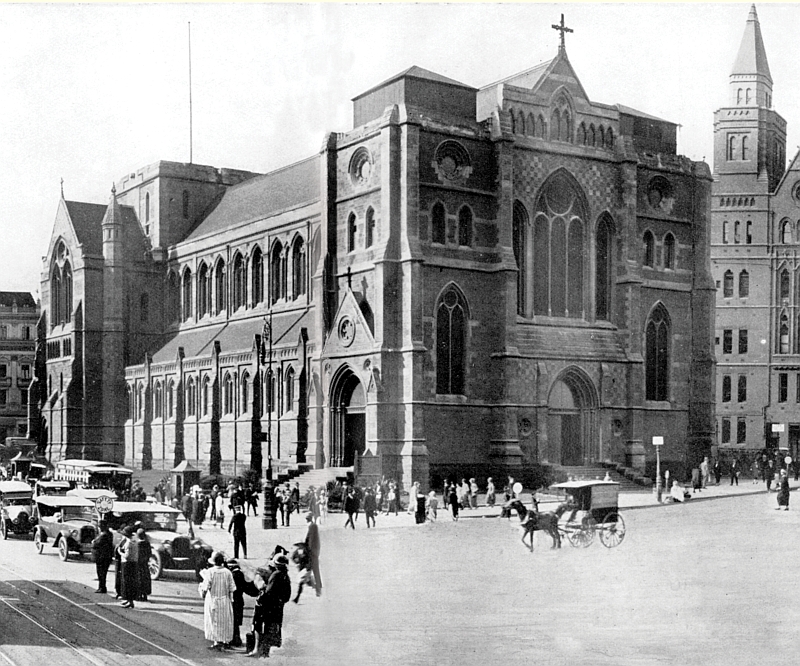
In 1924 a competition was announced for designs to be submitted for towers and spires to be added to the iconic cathedral in the centre of Melbourne as per the original design. The conditions of this competition comprised of 15 conditions of entry, including due dates, design submission guidelines, disqualification conditions, payment and cost of application, £1.
Competitions were often held for buildings of importance, many of which still stand today as landmarks around towns and cities of Australia. In Melbourne, these include the State Library of Victoria, The Melbourne Town Hall, the North Melbourne Town Hall and the Shrine of Remembrance.
The winning design was that of James Barr, which was published in a number of papers around Victoria including the Church Standard and the Argus, as were the designs of the two runners up, William H. Buck and Lippincott & Billson.



St. Paul’s Cathedral Architectural Competition Winner and Two Runners up. [Argus Newspaper and Church Standard] ca. 1924 – R.H.S.V Manuscripts Collection
A copy of the conditions for this competition are currently housed at the R.H.S.V and feature handwritten annotations by William Lucas, a Fellow of the Royal Victorian Institute of Architects (R.V.I.A) and a key figure in designing the landscape of not only Melbourne, but of Canberra and of Western Australia through the overseeing of and entrance in architectural competitions. Given to the R.H.S.V in 1939, courtesy of “the Late William Lucas”, these are proof readers notes correcting spelling, editing grammar and adding notes where needed. It is clear that Lucas took this redesign seriously, outlining these competition guidelines as clearly as possible.

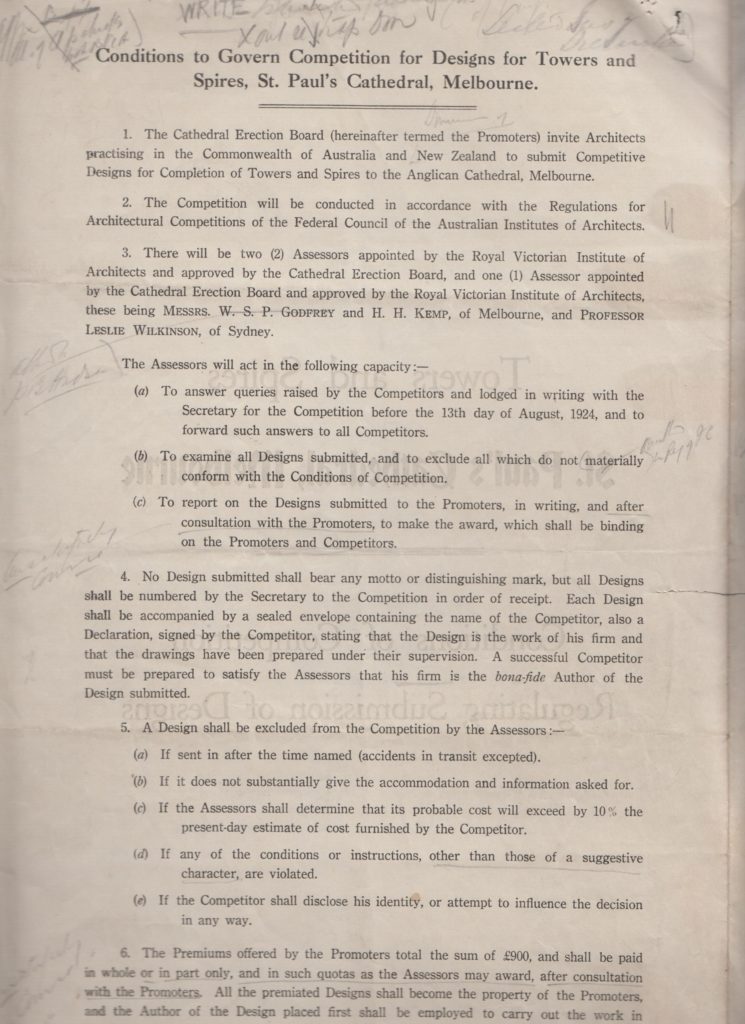
Selected pages from Towers and Spires, St. Paul’s Cathedral, Melbourne – Conditions of Competition Regulating Submission of Designs, annotated by William Lucas ca. 1924 – R.H.S.V Manuscripts Collection
William Lucas was born in Melbourne, and after some time in England he returned to Melbourne where he became a successful architect, elected an Associate of the R.V.I.A. in 1884 and made a Fellow in 1888. Little is known about Lucas’ life, bar his run-ins with the Government.
In 1924, much like with St Paul’s Cathedral, a competition was held for the design of the National War Memorial for Victoria, now known as the Shrine of Remembrance. Lucas entered this competition, having previously published a pamphlet in 1919 regarding the appropriate elements of a war memorial. Unfortunately for Lucas, he came runner up to winners Philip Burgoyne and James Hastie Wardrop.
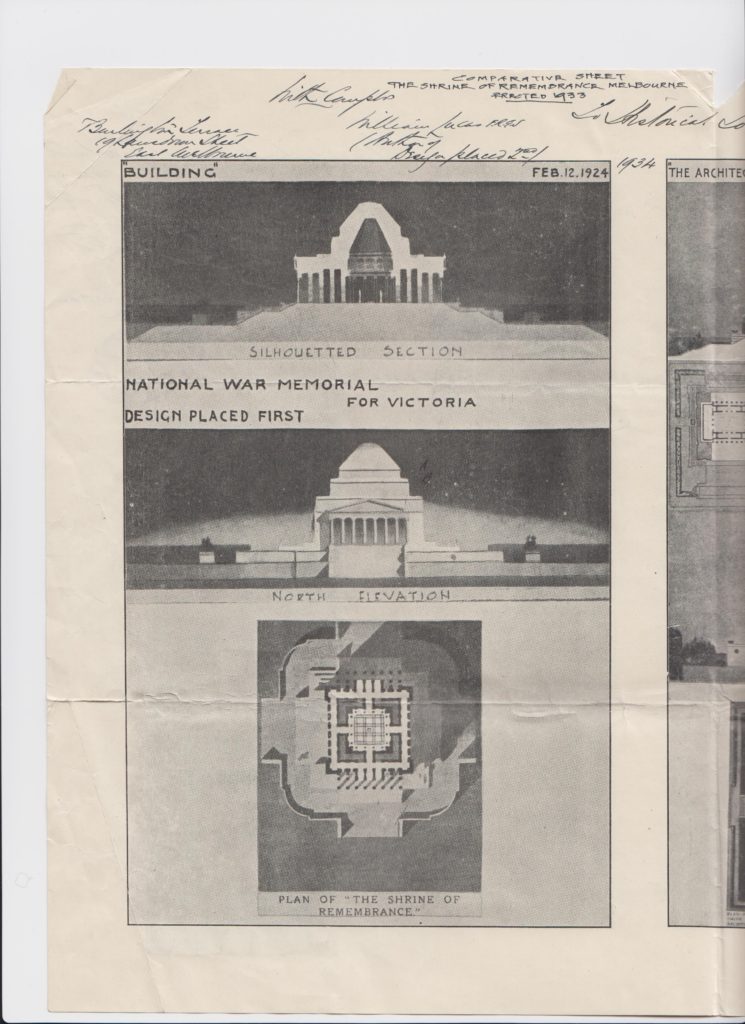
Winning Design for the National War Memorial for Victoria, annotated by William Lucas ca. 1924 –
R.H.S.V Manuscripts Collection
This moment in Lucas’ life may have been mostly forgotten by his peers if it were not for his response to the decision, which was to write an article assessing all 75 entries, damning the winning design for its “externalism”, “inviting traffic” and undermining the “holy ground concept” that he considered essential to any war memorial. The article entitled “The National War Memorial for Victoria: a review of the competition” was never published, however, it seems to have been circulated amongst Lucas’ peers and was not well received. As a result, Lucas was removed from the Journal of the Proceedings of the Royal Victorian Institute of Architects, of which he was the editor, convicted of professional misconduct at the May 1924 meeting of the R.V.I.A., and later that year removed from the institute altogether.

Open Letters by William Lucas, annotated by William Lucas [Letters – The Age] 1925 & 1934 – R.H.S.V Manuscripts Collection
We can see that Lucas was passionate about his work and took it very seriously. When Lucas died in 1939 he was still in arguments with the Government regarding the Villers-Bretonneux War Memorial to be constructed in France. He had won the competition to design this memorial in 1927 but became difficult to work with, refusing to compromise on the implementation of a deadline, changes to the design, and cost following the 1929 stock market crash and subsequent depression. As a result, the Government decided not to proceed with his design and in 1932 they offered him a £750 settlement as compensation and as Lucas’ recognition of the Government’s reneging of the project, which he refused. The memorial was opened to the public in 1938, not to Lucas’ design, after numerous attempts by Lucas to reinstate it, including contacting the Governor General and the King on more than one occasion.
The RHSV collection has a collection of William Lucas’ Papers regarding his Victorian pursuits, but also hand written notes, letters, newspaper articles, submissions, annotated conditions for competition entry and correspondence regarding the National War Memorial in Canberra, Parliament House in Canberra, The University of Western Australia and the Royal Institute of Architects new premises, all of which are passionately scribbled on and annotated, also coming into the collection in 1939. If Lucas had have succeeded in his architectural exploits, some of the iconic features of Australia would have been drastically different.
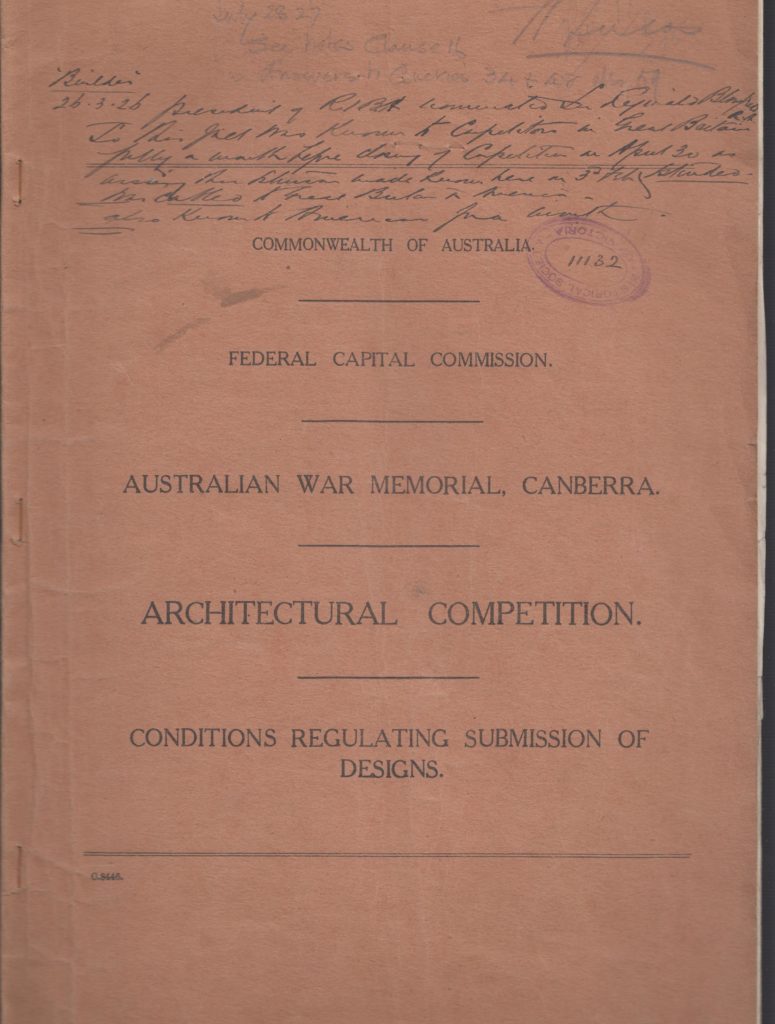


Selected Pages from Conditions Regulating Submissions of Designs for the Australian War Memorial, Canberra, annotated by William Lucas, 1926-1927 – R.H.S.V Manuscripts Collection
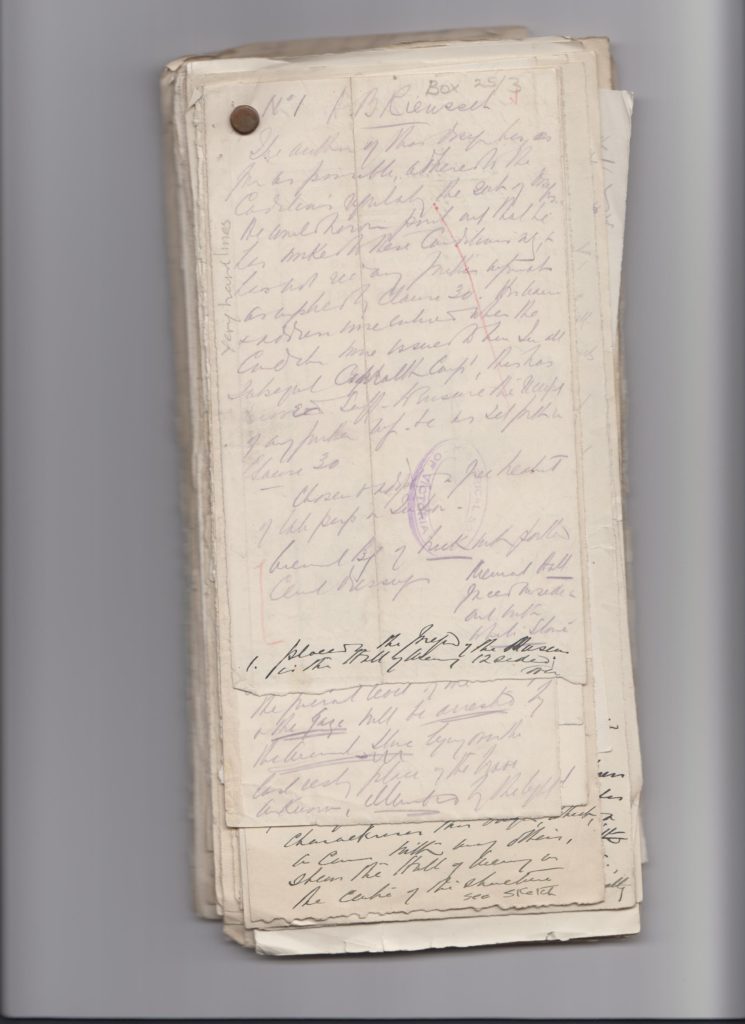
So next time you walk under the clocks and down the steps at Flinders Street Station, or are crossing Swanston Street, take a look at those iconic and comparably new spires on top of St Paul’s, or peer down St Kilda Road at the strategically placed Shrine. Both could have been vastly different designs, changing the landscape of Melbourne today.
Sources and Further Reading:
ArchitectureAU : Australian war memorials: William Lucas versus the government
State Library of Victoria catalogue : St. Paul’s Cathedral, Melbourne. [picture]
Trove : The war memorial of Victoria and capital : a suggestion / by William Lucas
Trove Newspapers : St Paul’s Cathedral spires in The Age, 16 Feb 1925, p. 11
Australian Institute of Architects : Shrine of Remembrance
Australian Institute of Architects : Architecture in the State of Victoria
Culture Victoria : St Paul’s Cathedral
Shrine of Remembrance, Melbourne : History
Richardson, Donald. Finished and Unfinished Memorials: The stories of William Lucas and C. Web Gilbert. Victorian Historical Journal, Vol. 70, No 1, June 1999. p 7- 42. State Library of Victoria

 239 A'Beckett Street Melbourne, Victoria, 3000
239 A'Beckett Street Melbourne, Victoria, 3000  03 9326 9288
03 9326 9288  office@historyvictoria.org.au
office@historyvictoria.org.au  Office & Library: Weekdays 9am-5pm
Office & Library: Weekdays 9am-5pm

